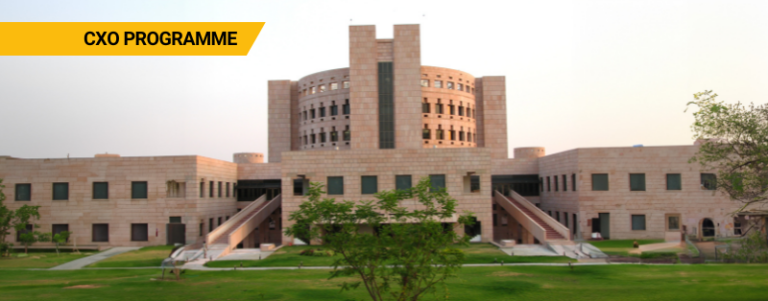Organizational Development: Importance and Benefits to Business

As the norms and the culture of the workforce transform, the organizational development theory is at the front and centre of this transformation. But, to understand the importance of organizational development in the workplace and how it is critical for your company’s success, you need to understand what it means.
What is organizational Development?
Organizational development is a separate disciplinary field of behavioural science that basically exists to improve the workplace for employees. Organizational Development is often referred to as OD, and its aim is to improve the processes that are existing and create new ones.
The idea behind OD is to understand how to maximize the capacity, potential, and effectiveness of both the organization and the people. The science behind organizational development theory combines adult developmental psychology and industrial/organizational development psychology. Some areas where companies benefit from the OD theory are-
- Communication, externally and internally
- Development of Employees (Training)
- Process and Service improvement
- Sales enablement
Organizational Developmental can sound a lot like a function of human resources. But this is incorrect. Organizational development in HRM is falsely attributed as the focus of the Human Resource Management department is the employees or the people, whereas organizational development focuses on the entire organization. OD aims at systematically moving people towards change for better results.
Importance of Organizational Development to Businesses
If you are wondering why organizational development is important to businesses, then the answer is ‘change.’ The only thing that stays constant, in life or in business, is change. Organizations need to change as often as consumer needs, technology, and cultural needs demand it.
The main goal behind the organizational development theory is improvement. But, improvement can have different meanings for different organizations. Here are a few examples of how OD can affect the organization.
For Employees
- Group, Individual, and internal team relations.
- Team Building
- Small or large group interventions
- Leadership development and mentoring
Technical Structure
- Organizational Structure
- Quality management systems
- Work Design
- Role enrichment
Organizational development in HRM
- Performance management
- Talent development & management
- Inclusion and diversion in the workplace
- Wellness initiatives
Strategic Organizational Development and Change Management
- Change in the processes
- Transformational restructuring or changes (for example, mergers) that involve more than one company.
Benefits of Organizational Development
There are several benefits of organizational development to help you understand its importance in an organization.
Optimization of Operations
The organizational development process aims at identifying operations that need a change within an entity. This process is helpful to the decision-makers when they are coming up with a management plan.
The management team needs to come up with a plan that can help in analysing the needs of an individual and the effects that the change will have. This plan is also responsible for analysing the effects of this change on the workforce and for figuring out the best way to roll out these changes to the entire organization.
One of the outcomes of the organizational development process is increased profitability. Optimization of operations increases efficiency and productivity as a whole. It is also responsible for fostering innovation, which gives rise to increased profitability.
The underlying idea of the optimization process is to help in formulating viable answers to the questions that the organization faces. The answer found must also be the most effective and efficient way of solving these issues.
Improved Efficiency
The organizational development process is responsible for enabling an organization to improve its offerings and processes. Organizational development also helps in making strategic choices in every activity performed by the organization, thereby improving efficiency. Organizational development is also responsible for producing better outputs with the help of lesser or the same levels of input.
Improved Effectiveness
Along with improved efficiency, organizational development and change management also bring about effectiveness. One of the outcomes of organizational development is increased feedback, interaction, and communication.
These outcomes lead to multiple answers to the needs of the business. All of these make sure that thorough research of the options that are available is completed, and then only is the best option chosen after careful consideration of its effects. Therefore, there is a high probability that every chosen solution will meet its aims.
Positioning for Future Expansion
The leaders of an entity need to have a vision about the nature of the expansion of the future operations for the future expansion of an organization. Also, the future vision needs to be communicated so that buy-in can be bought from the other parts of the organization in achieving that vision.
Organizational development and change management are helpful in communicating the future vision and then pooling the capability and potential necessary for achieving that vision.
An HRM professional who makes use of Organizational development in HRM is successful at managing and identifying business roles as well as creating roles that provide an answer to an issue.
This move helps in the retention and attraction of talents whose vision aligns with the vision of the entity. The professionals are also responsible for identifying any skill gaps and then working towards bridging those gaps.
Explore Marketing Opportunities
When you are exploring new opportunities, you also need to assess the existing organizational development process. This move seeks to make an assessment about whether an organization is flexible enough to suffice to seize an opportunity. An organizational assessment is needed to make an assessment of the need for more unique resources.
At times, new opportunities can be responsible for stressing the existing business opportunities. Organizational development is responsible for identifying the weakness and strengths of processes. Through the process of review of a portfolio, an organization can come up with a much state-gate mechanism that will help in fortifying the processes and accommodating new opportunities in the market.
Capacity Building
Every organization faces market and industry changes that force it to adopt some organizational development processes. This adaption arms the employees with the expertise that allows them to meet the new requirements of the market.
Therefore, an organization has to enhance the skills and competency and improve the work process of the employees through training. Additionally, 93% of employees feel that training programs affect their engagement levels positively.
One of the aims of organizational development is balancing the strength and weaknesses of an organization. This aim helps in restructuring employment resources, which includes human capital, such that efficient and productive use can be made of the resources of an organization.
There are different ways of achieving this aim, but organizational development theory makes use of an org-wide and systematic approach that improves the applied strategy’s effectiveness.
Summing Up!
Organizational development is responsible for the free flow of communication and information between the different facets of an organization. So, every organization must be aware of when they should start implementing these processes.
This process begins with the development of the capabilities of the leadership. According to a study, 83% of businesses feel that it is important to develop leaders at all levels. This move helps in empowering the leaders with skills that support retention, motivation, and productivity. Therefore, the leadership is able to give a direction that leads to the organization achieving the values that they have set.






